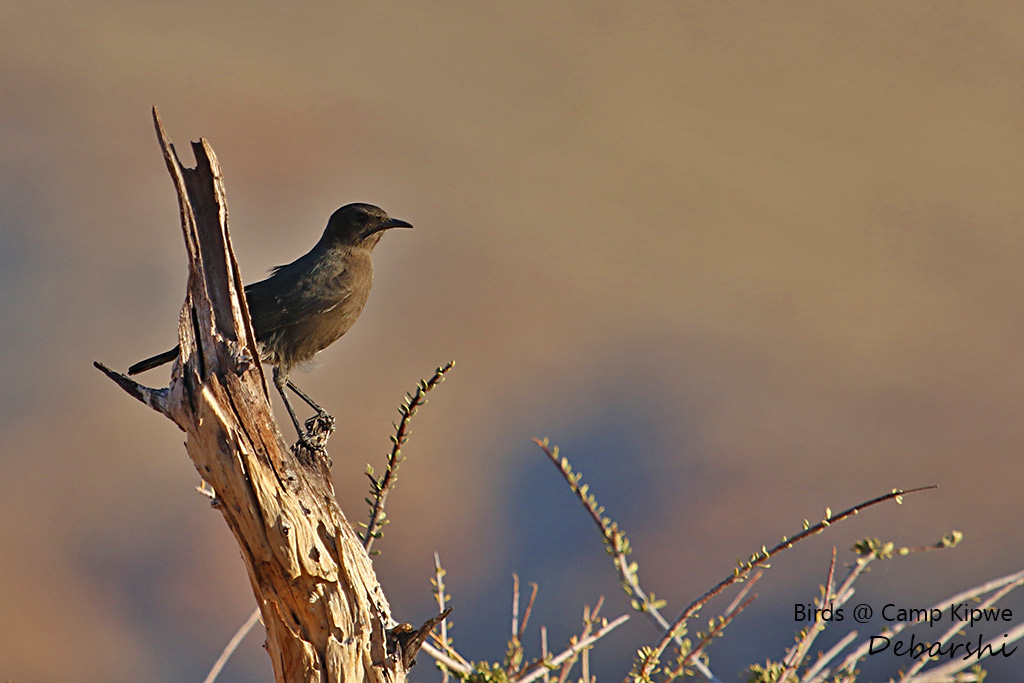Introduction
Twyfelfontein is the first UNESCO world heritage site in Namibia with an astounding collection of rock art and rock paintings. Locally, also known as Ui-Ais or Jumping Waterhole in Damara language.
San or Bushmen art can be seen in Twyfelfontein and Brandberg in Namibia thought to be 28000 years old!
Damaraland is ruggedly and hauntingly beautiful. I have found Damaraland to be a distinctive area in the world. The area has several endemic species like the Damara Hornbill. We drove across North & South Damaraland or the Kunene Province. Our experience in the luxurious Grootberg Lodge, Camp Kipwe & Erongo Wilderness Lodge are etched in our minds forever.
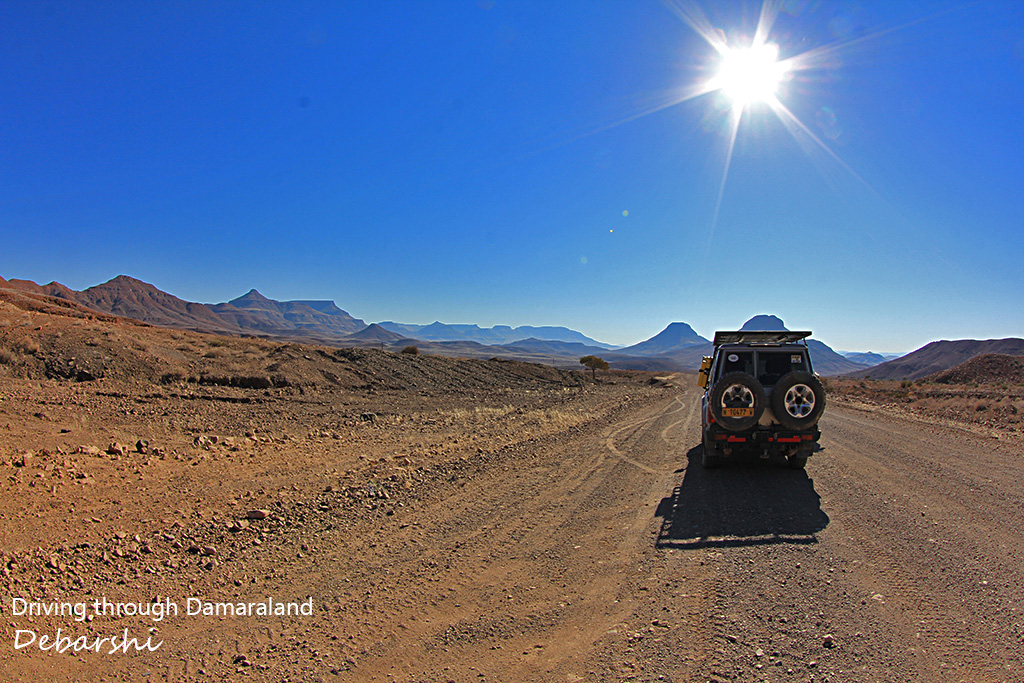
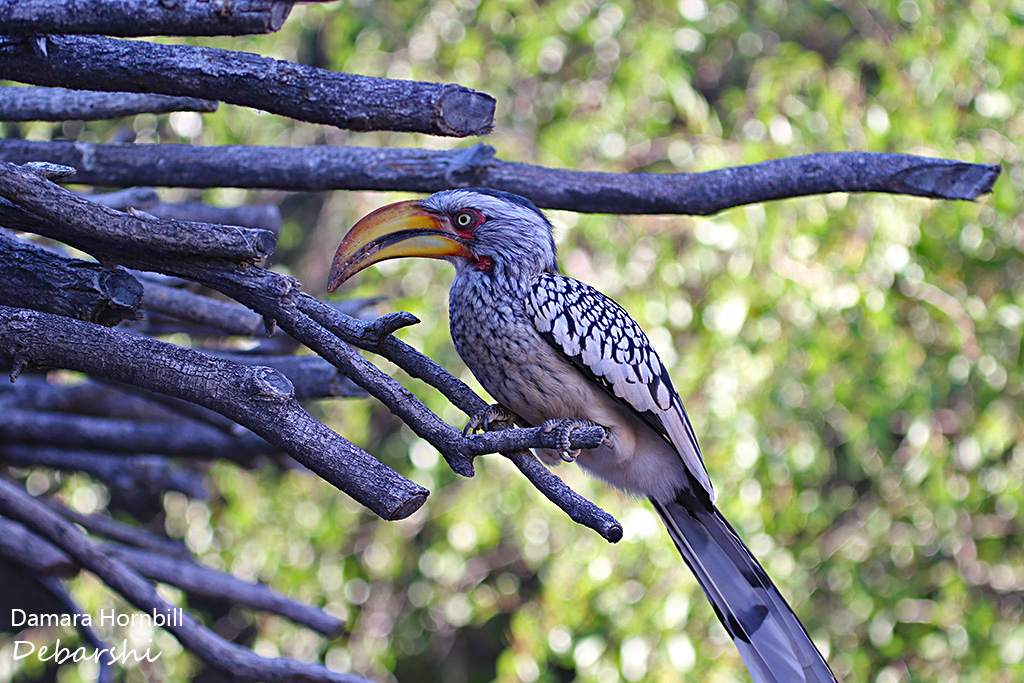
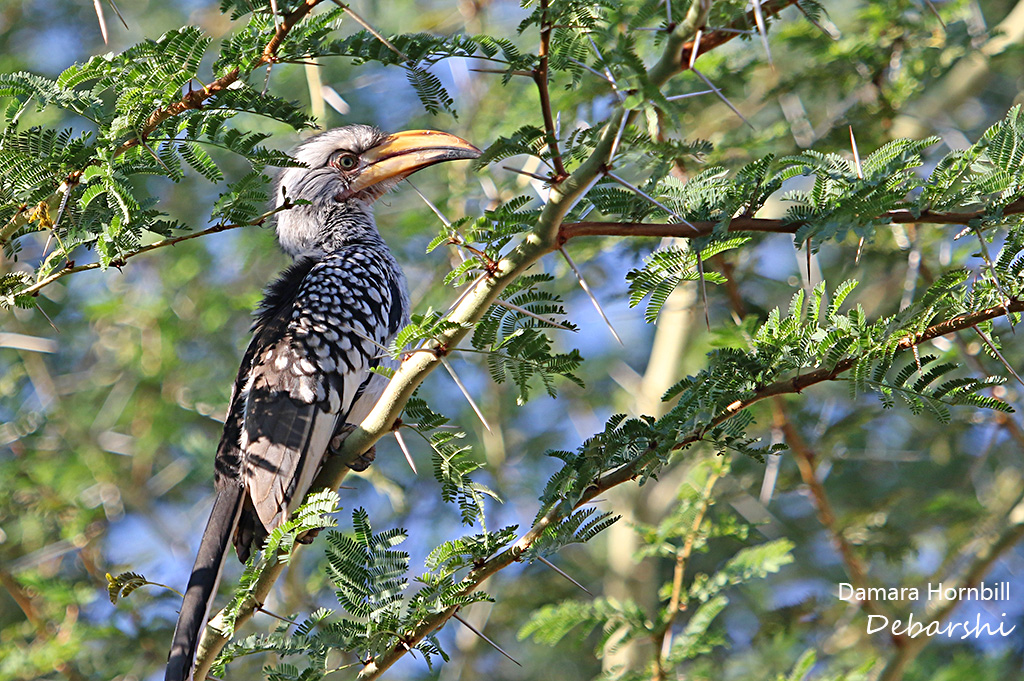
Twyfelfontein Facts
The Twyfelfontein valley had been home to the San hunters & gatherers drawn by the perennial spring.
The Khoikhoi herdsmen were next to settle here. The Khoikhoi revered Twyfelfontein and performed Shamanistic rituals.
This open gallery has been their work of art. Archaeological digs have revealed probable dates anything between 3450 to 5850 years affiliating the find with the late Holocene hunter-gatherers.
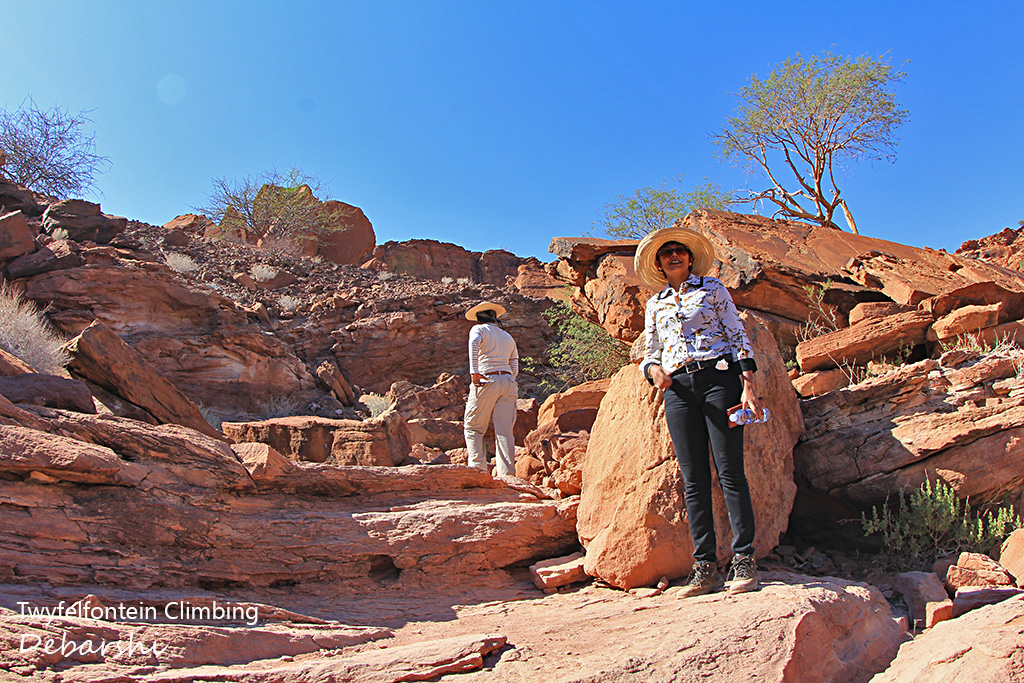
In modern times, Reinhard Maack was the first to speak about Twyfelfontein site in 1921.
Much later in 1946 David Levine, a sheep farmer from Mariental, moved here with his family. He discovered these rock carvings & paintings and named his farm Twyfelfontein, meaning ‘doubtful spring’. He left in 1964 as the land was appended with the local areas of the Damara tribe. The name Twyfelfontein or Doubtful Spring stayed on as Levine named it; uncertain of the fact if the spring would provide his family and sheep enough water.
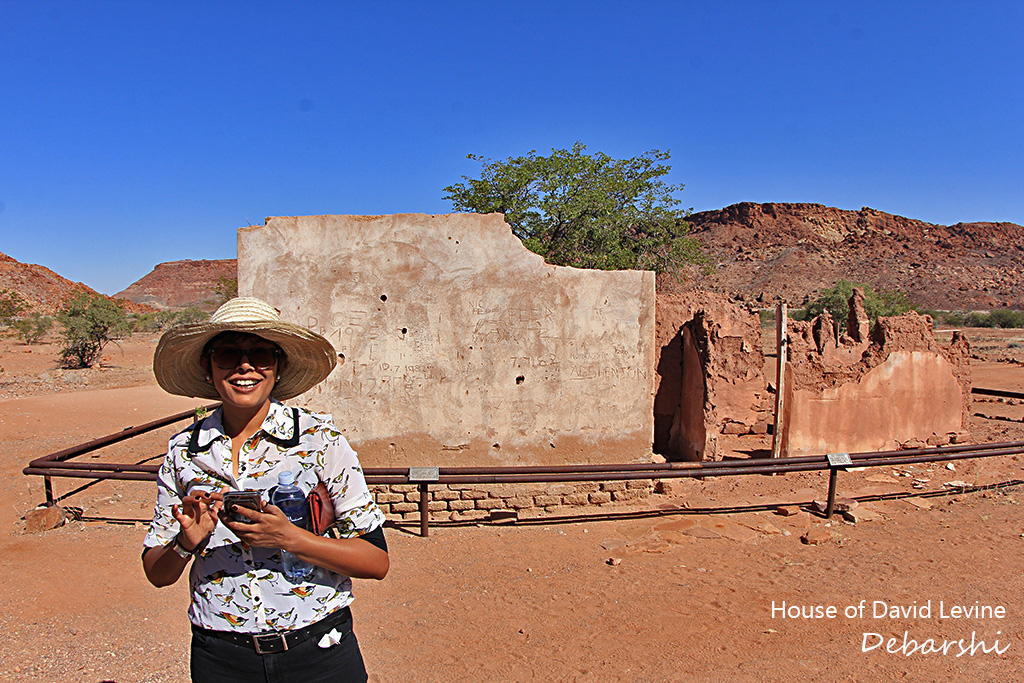
The local Damara tribes always knew of the site and believed Twyfelfontein a holy area inhabited by the spirits. Twyfelfontein was proclaimed a National Monument in 1952 and recognized by UNESCO in 2007.
How to Reach Twyfelfontein
We drove to Twyfelfontein from the Grootberg Lodge in approximately 2.5 hours, a distance of 130 km. The C40 brought us to Palmwag and then the C43 and C39 and the last stretch of a village road brought us to Twyfelfontein.
If you are driving in from Kamanjab, it is a distance of about 200 km and you can cross the superb Grootberg Pass. I will write more about our stay in the Grootberg Lodge and our close encounter with the Damara Elephants in a separate post.
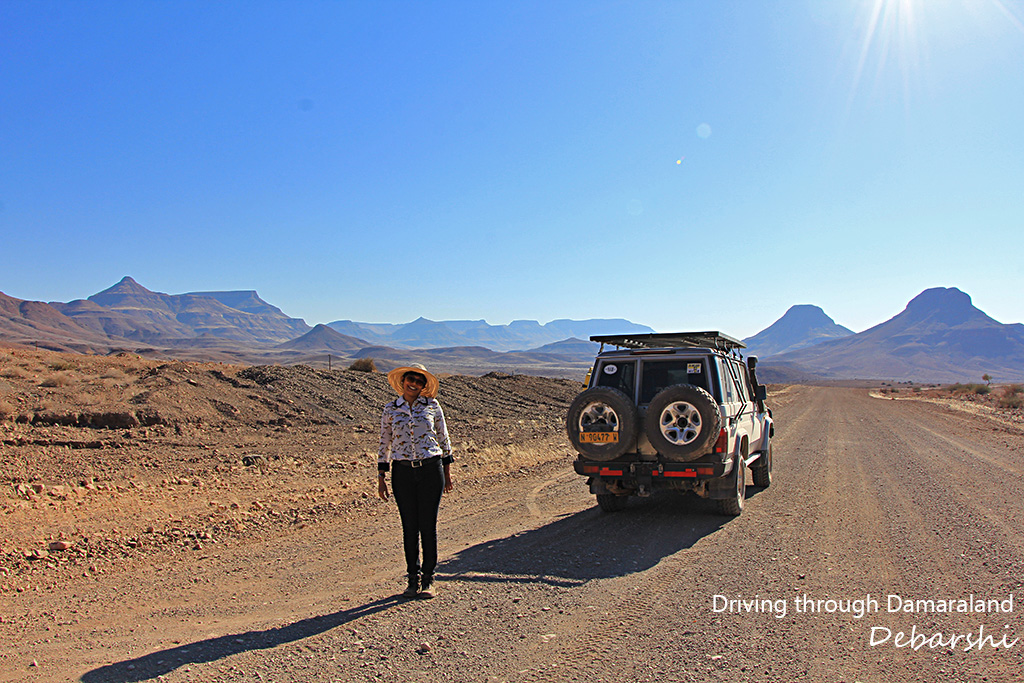
Twyfelfontein Visitors’ Center
The sun was blazing hot as we parked in the visitor’s center around half past 11.We did contemplate going off to our resort – Camp Kipwe and returning around 4 pm when the sun would reduce to a pleasant tenor. But then, we decided to go ahead with Twyfelfontein and later relax in the evening.
There is a stone trail laid out to the visitor center and then to the viewing platforms for a first-rate view of the major engravings without touching them. It is blazing during the day with no shade, so do remember to don full sleeves, a sun hat or cap and apply sun screen. You also have to climb on rocks, so wearing a comfortable pair of walking shoes does help.
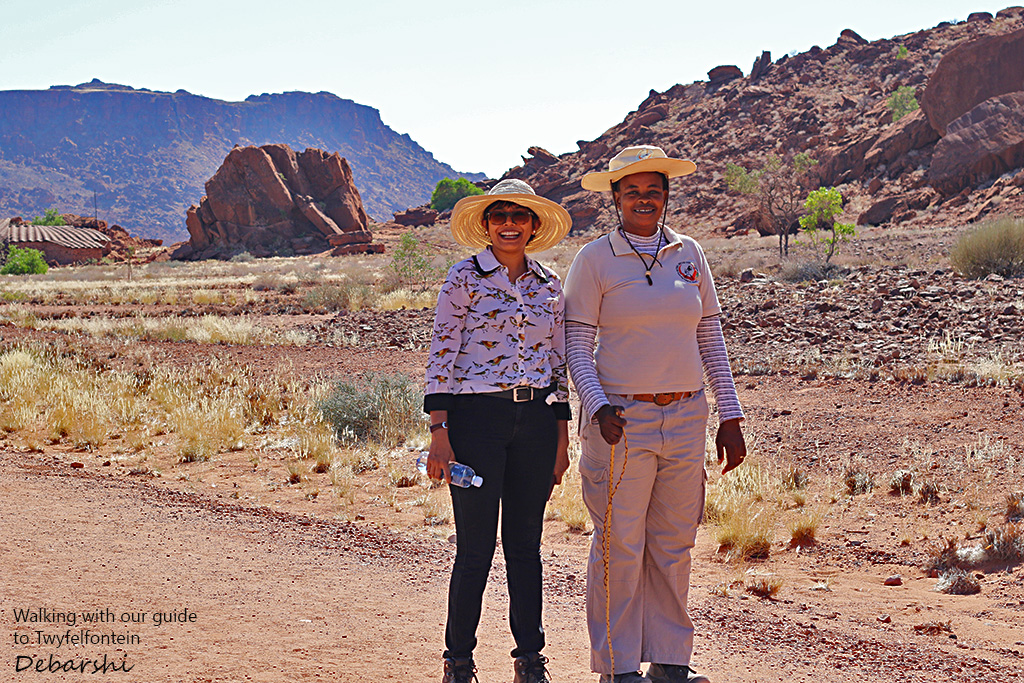
Twyfelfontein is open from 8am-5pm, a good time to visit is either early in the morning or later in the afternoon, also to capture the various hues of yellow ochre and red sandstone on your cameras.
The Twyfelfontein entrance fee includes the cost of guide (Adults – NAD30 and children NAD 25 for children).
The visitor’s centre overwhelmed us . It is a mélange of red sand stone, some metallic installations and recycled materials and blends in with the surroundings. The center can be completely dismantled.
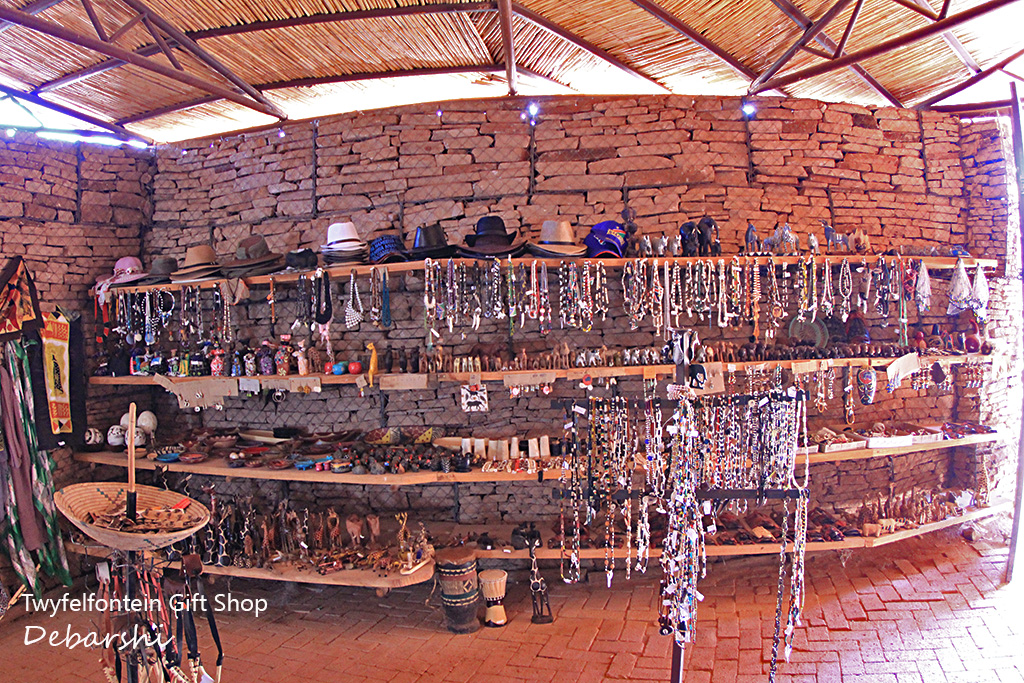
You will get to know the history of the site and the meaning of the engravings. A guide is assigned to you to each group of visitors small or large and they take you around the place. The center also sells lots of trinkets and tribal jewellery along with the usual fridge magnets, shot glasses, t-shirts and coffee mugs.
Almost all guides and the staff in the visitor centers are females from the local Conservancy. They are quite fluent in English, French and German.
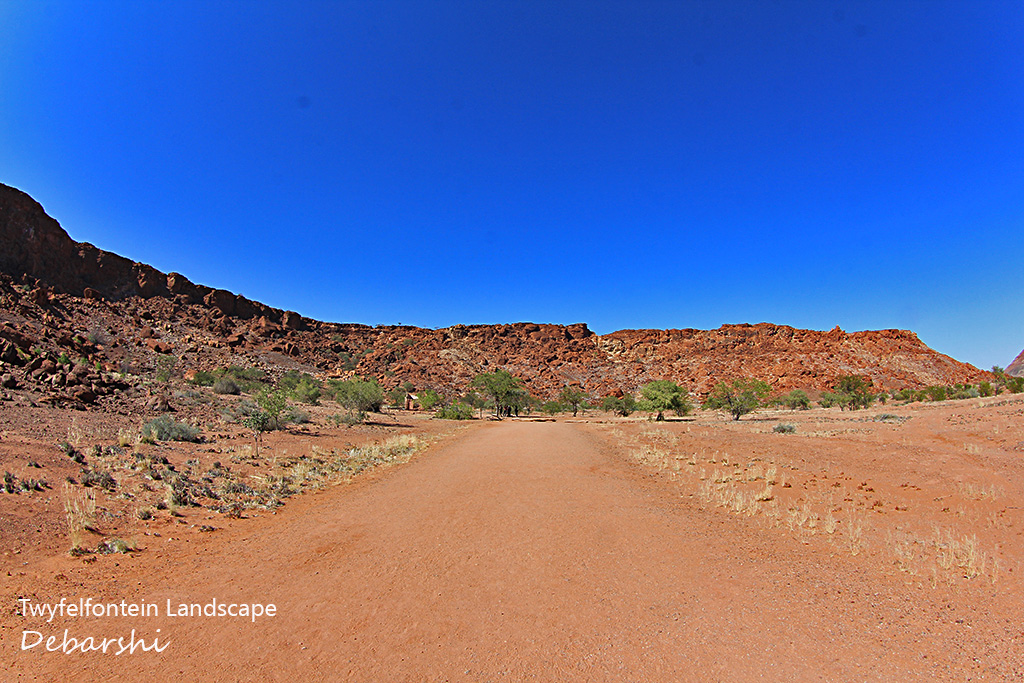
Why was I not dressed in heavy silks and jewellery?
As we were leaving Twyfelfontein, a female staff approached us asking where we were staying. She said she had an infant at home and wanted to utilize the lunch break to go feed him, thus if we could drop her to her village. We were quite happy to oblige and learnt more about her family and other children. Meeting her was quite a revelation!
We learnt that Bollywood movies and Hindi TV soap operas were quite famous in Namibia. My attire – jeans and boots ,short crop and no jewellery really bowled her over . Where are the silk sarees ? Why is your hair short ?
Her thoughts – All Indian women have long flowing hair and are always dressed in heavy jewellery and gaudy silk sarees.
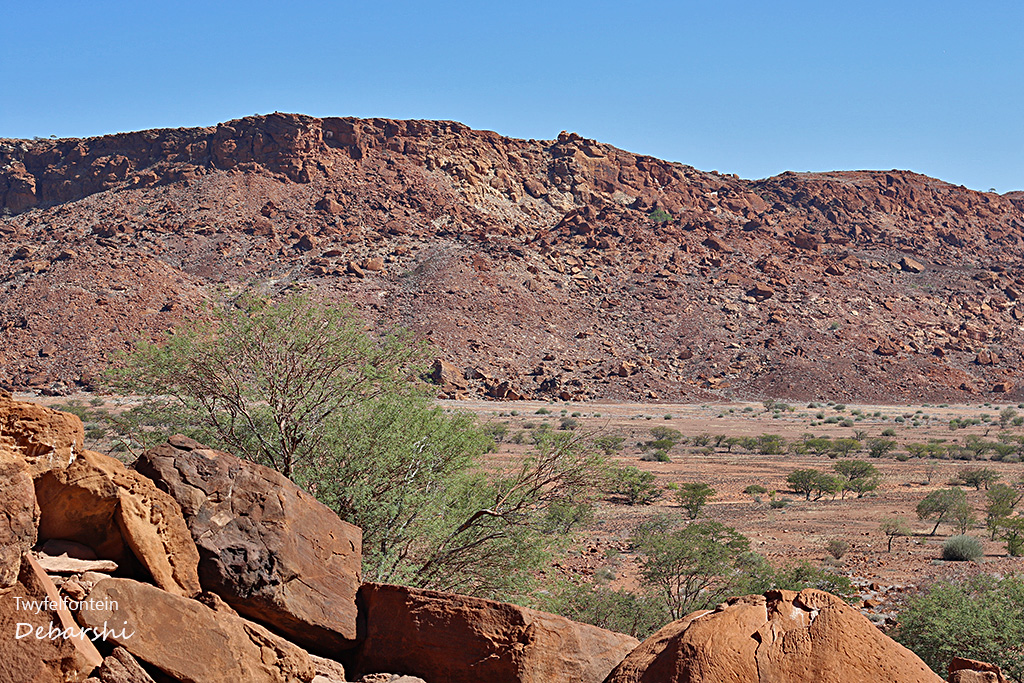
Twyfelfontein Rock Art
Our smiling guide told us to don our hats and have a large gulp of water before setting out into the sun. There are two routes which can be taken and we had read this earlier, so both Debarshi & I said in the same breath – The Lion Man.

She said the Shamans or medicine men etched these paintings to record their experiences. Also many of these early men wandered while hunting or looking for water and encountered several animals. They have also etched the footprints of each animal.
212 slabs of Rock engravings have been discovered. Our guide also mentioned a recent discovery of additional 13 panels with rock art. Archaeologists have also dug up stone artefacts and stone tools.
The San or Bushmen were hunters and gatherers and trailed behind water, game and edible plants and were always on the move. They were not farmers or animal rearers.
This work has been protected through the centuries in this dry arid land with no rains. They etched on the surface or patina of the red sandstone boulders to create this out of the world rock art way before the Damara herders or the European explorers came in.
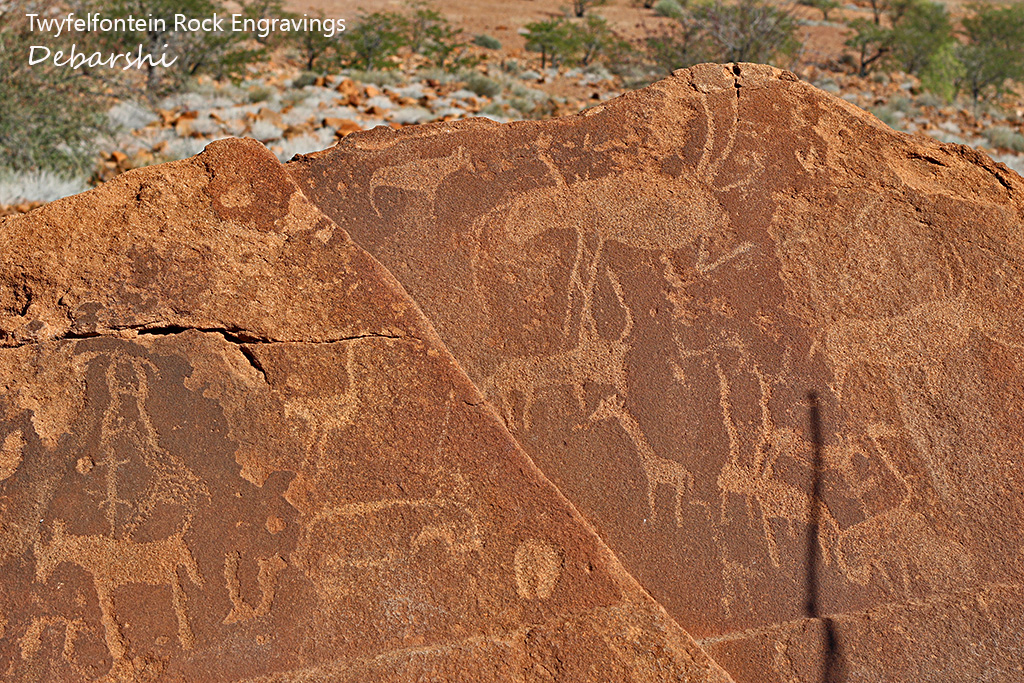
Famous Rock Art
There are 2075 identifiable images quite conservatively of which is a tiny percentage of what exists and still not discovered. There are 212 panels here and one in the National Museum in Windhoek.
We saw very well-preserved engravings of rhinos, elephants, ostriches and a gigantic giraffe. There are some engravings of a mythical animal, the rituals during ceremonies and some symbolic engravings. A rather striking image is that of the human and animal footprints with motifs of human figures in darker ochre to teach children to track and identify animals from their pug marks or hoof prints. Many also served as maps to guide them.
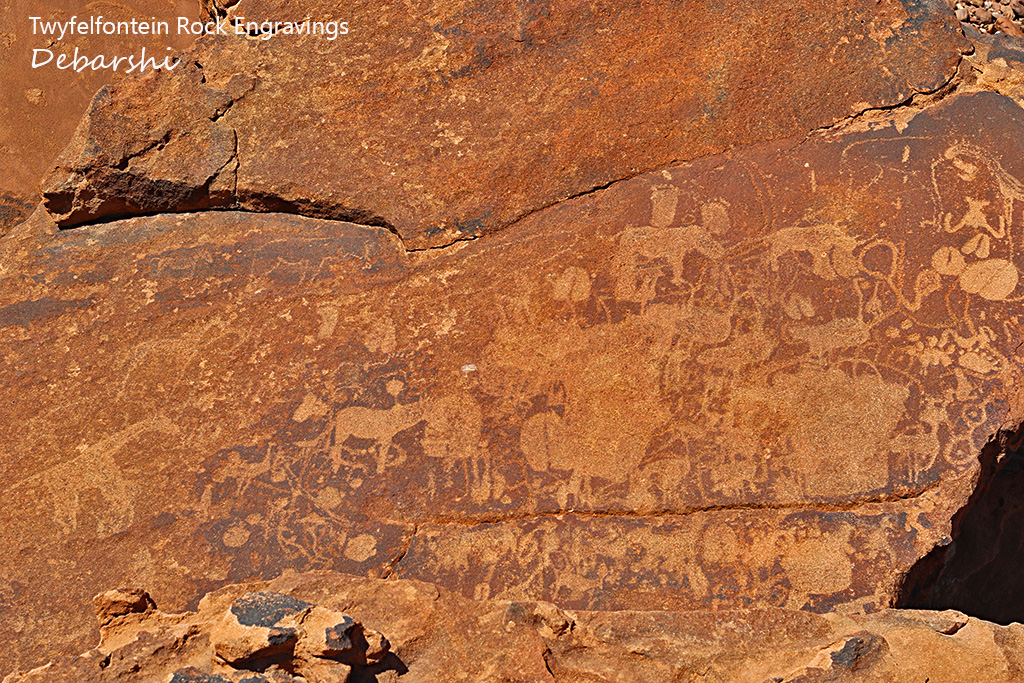
There is also a giraffe with five horns and a 4 headed ostrich showing movement. There seemed to be some portraying pregnant animals as well to educate the children not to hunt them.
Another notable feature – drawings of seals, dolphins and penguins. The San or Bushmen may have seen these animals in their travels to the Atlantic coastline and the Skeleton coast.
Our guide mentioned that many of these etchings illustrate the shaman’s experiences in the other worlds, hence they are next to the crevasses and cracks in the sandstone – supposedly the portals to the spirit world.
LION MAN
The most renowned and maybe the most impressive rock engraving is the LION MAN. This lion has five toes on each paw. As for the tail, the end looks like a human hand. This may depict a man who became a Lion in the other world.
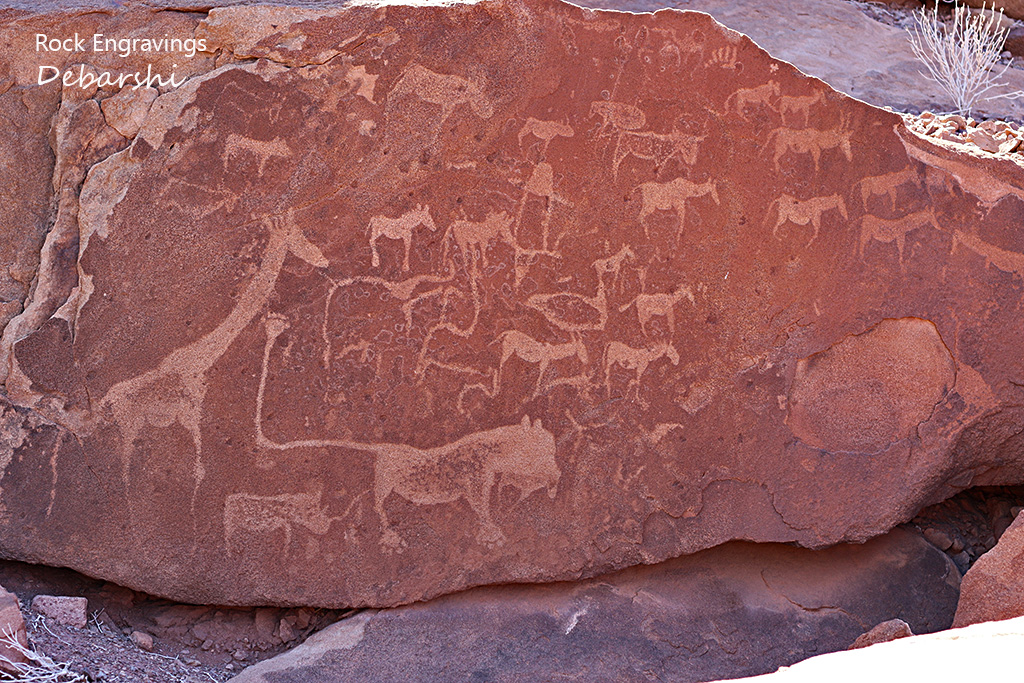
Living Museum of the Damara
As you are driving past the exit road from Twyfelfontein, you will come across the Living Museum of the Damara. This project was established in 2010 . The main objective is to preserve and showcase the traditions and the culture of the Damara community. All proceeds earned here serve the cause of the upliftment of the community.
The museum has a traditional village set up with huts and men and women of the tribe put up an exhibit of foraging medicinal plants or lighting a fire.

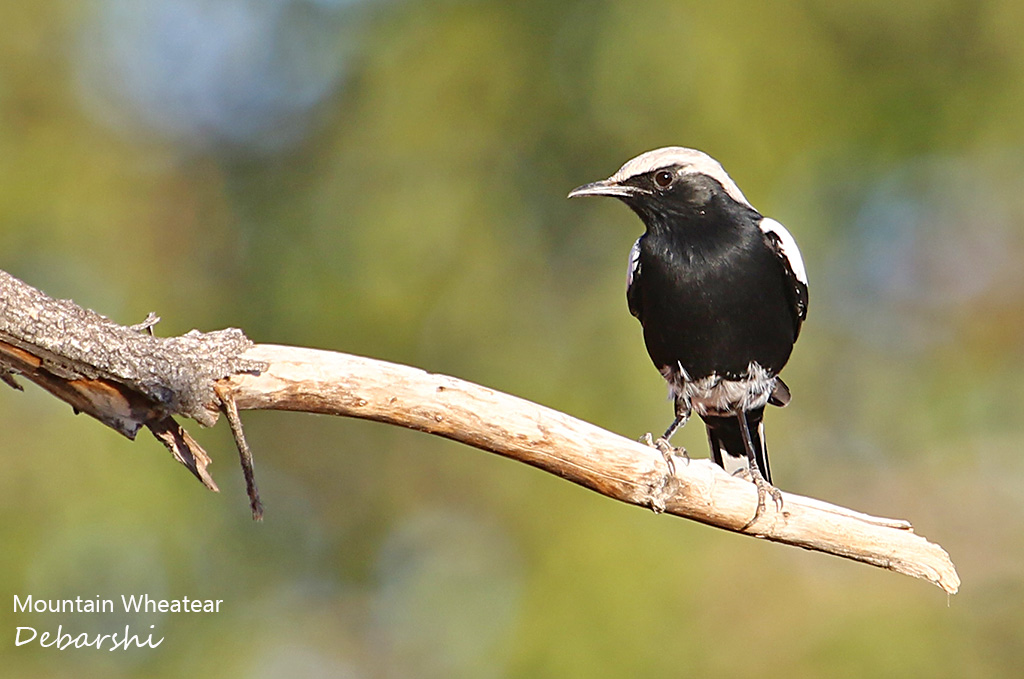
Twyfelfontein Burnt Mountain & Organ Pipes
This was not in our itinerary. But the next morning as we proceeded to Spitzkoppe, we decided to stop enroute.
Burnt Mountain
This was not quite impressive. May be the timing! I did read that the rising and setting sun brings out a remarkable play of colours amidst the desolate landscape. The rich ruddy hues intermingle with shades of black and amethyst. But during the day, it just looks a burnt charcoal mountain. You are not allowed to climb the Burnt Mountain.
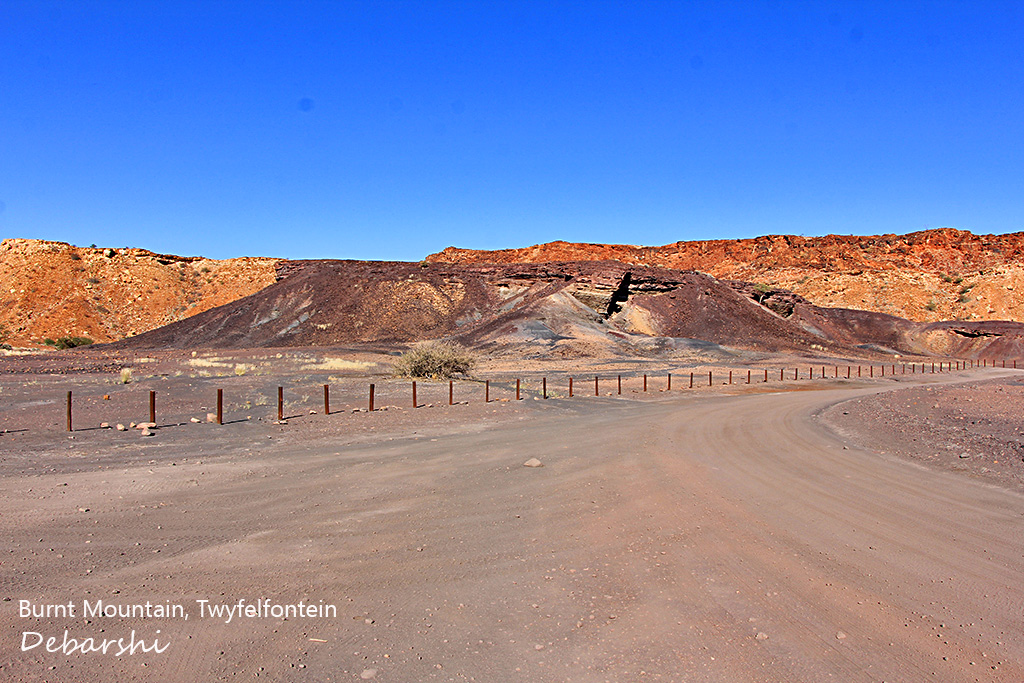
Organ Pipes
Just as you drive a little ahead, you will come across an array of dole rite columns known as the Organ Pipes. This unique geological formation is close to 150 million years. The molten lava pushed above the earth’s crust and cooled from the outside in. The inner lava or magma could then move only vertically. Thus , the rocks split vertically on cooling forming polygons were formed with no space in between. The geological formation resembles a church organ. You will get to see hexagons and triangles in varying heights.
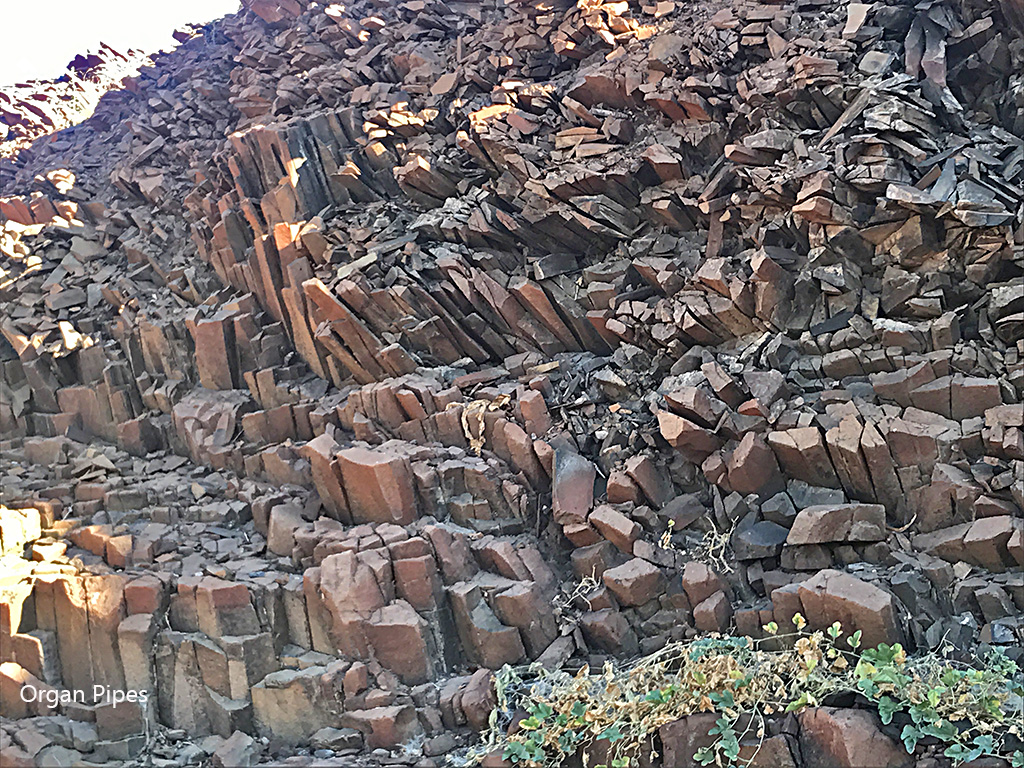
Twyfelfontein lodges
Twyfelfontein has a few really luxurious resorts as well as camp sites.
You can stay in the Twyfelfontein Country Lodge which is a moderate lodge very close to the site or you can also stay in the Mowani Mountain Camp – one of the most luxurious lodges with luxury tents or solid suites. There are also some camp sites like the Aba-Huab Campsite along the along the river bed.
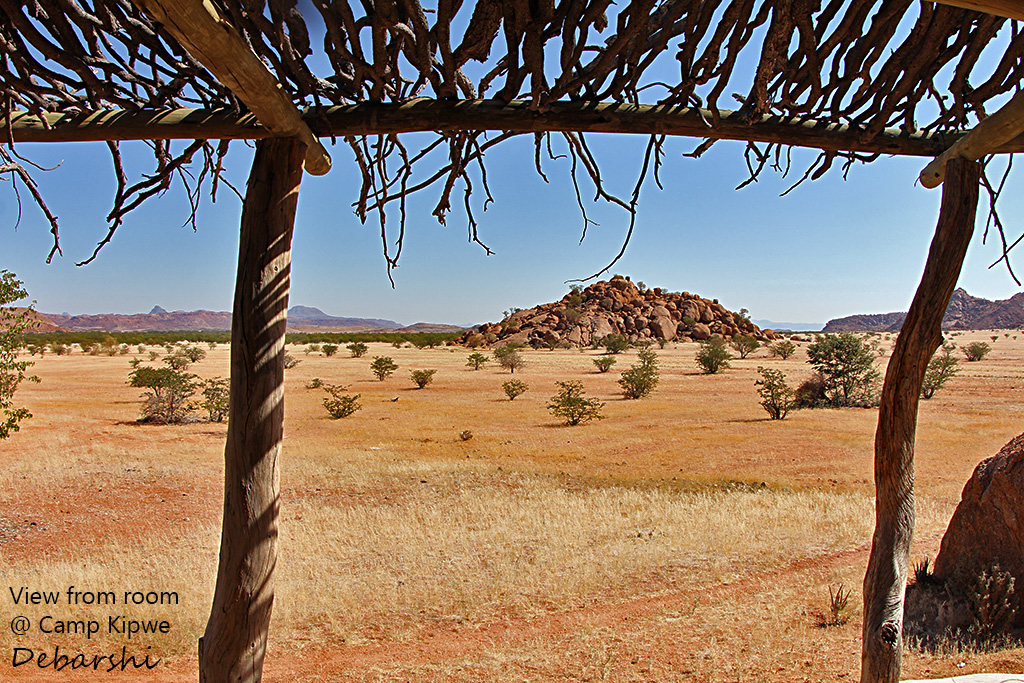
Camp Kipwe
We stayed in Camp Kipwe. This resort is a plush and small lodge set in large granite boulders. The setting offers great sunset views. The sundowner is on top of the boulders, a truly romantic setting.
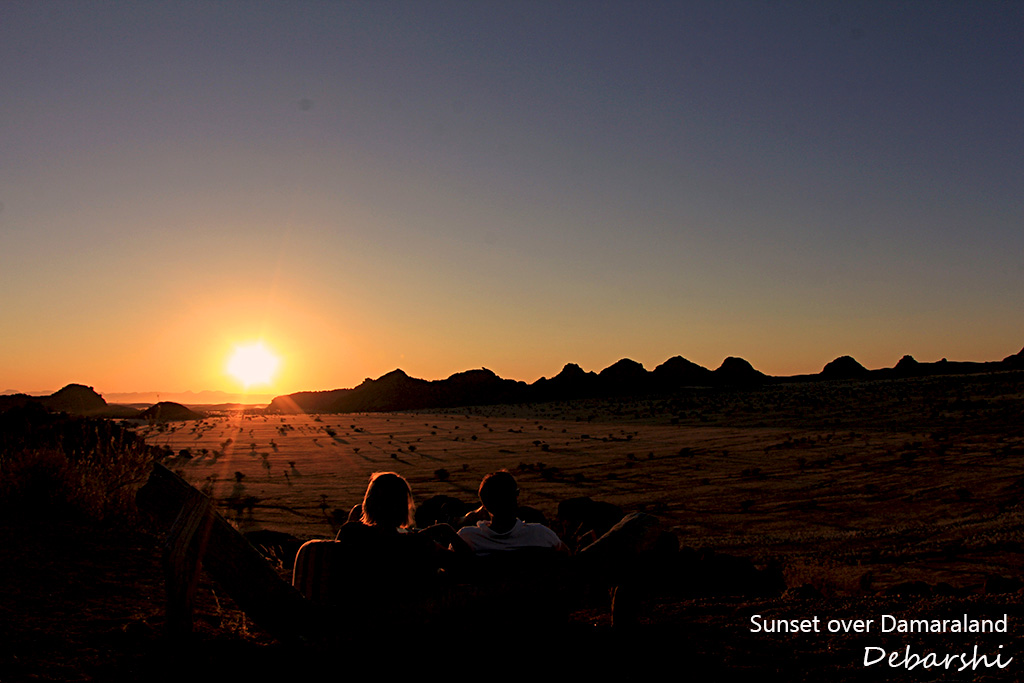
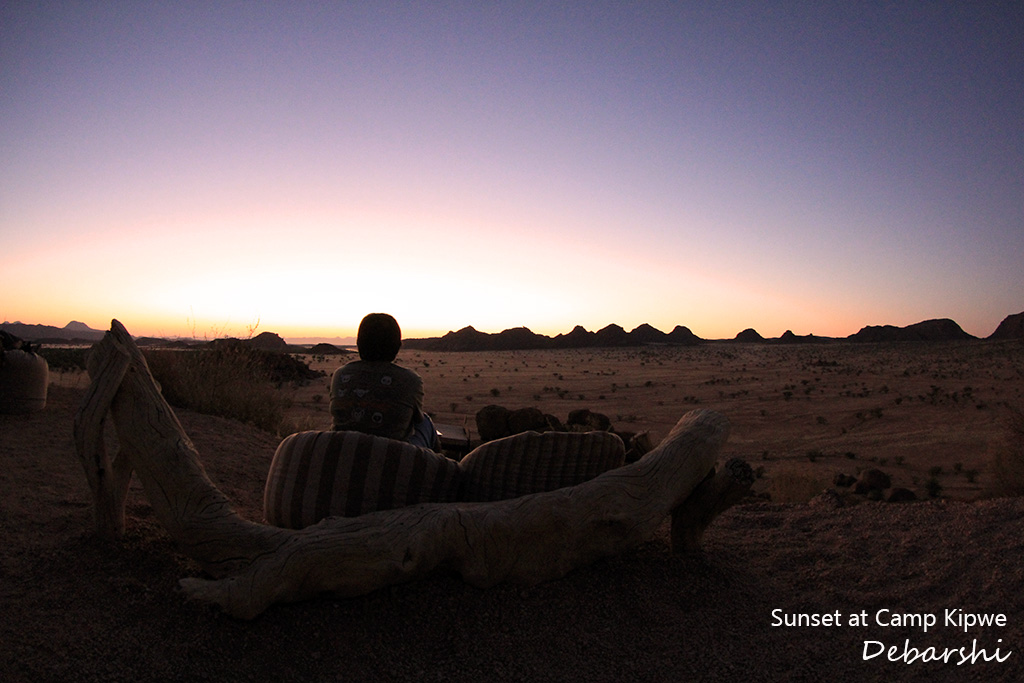
The dinner is a private affair. Each table has a personal butler with a five course meal.
So is the breakfast. Not a buffet table . The chef doles out individual made to order breakfasts.
Camp Kipwe has individual air conditioned thatched domed villas. The room is huge , the bed is soft and the restroom is open. The open rest room is quite dreamy at day but as I sat on the pot at night, a couple of bats kept flying above my head!
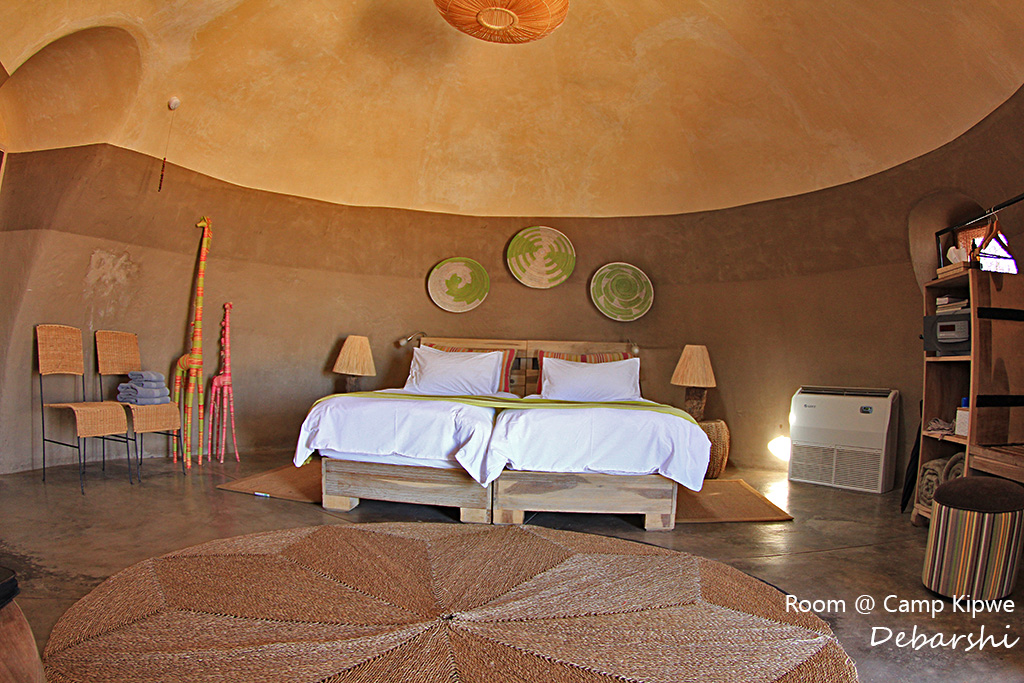
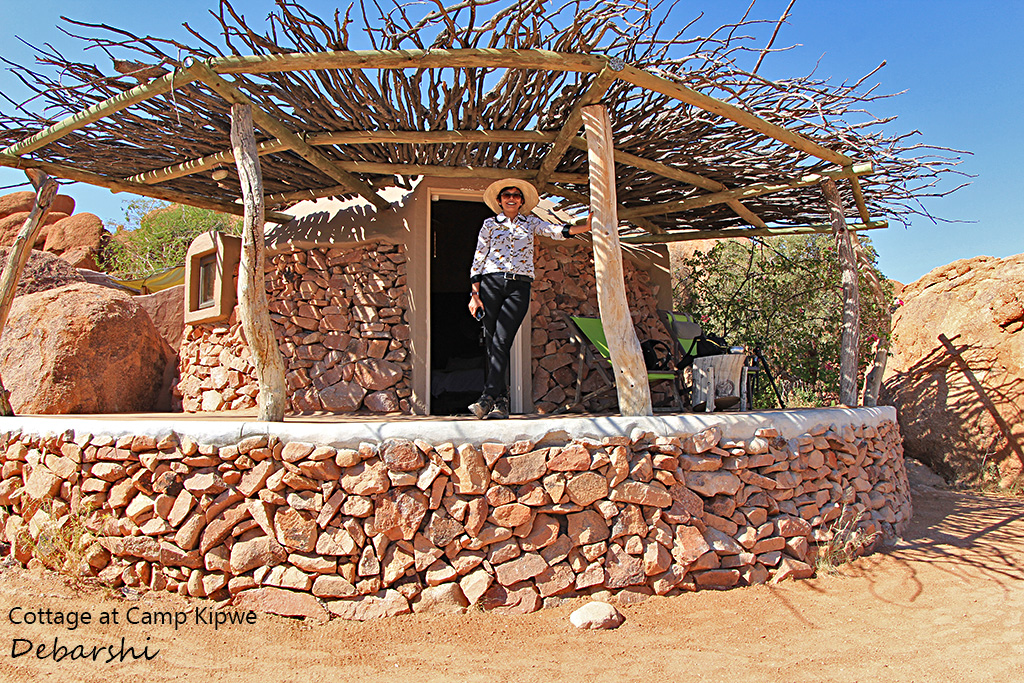
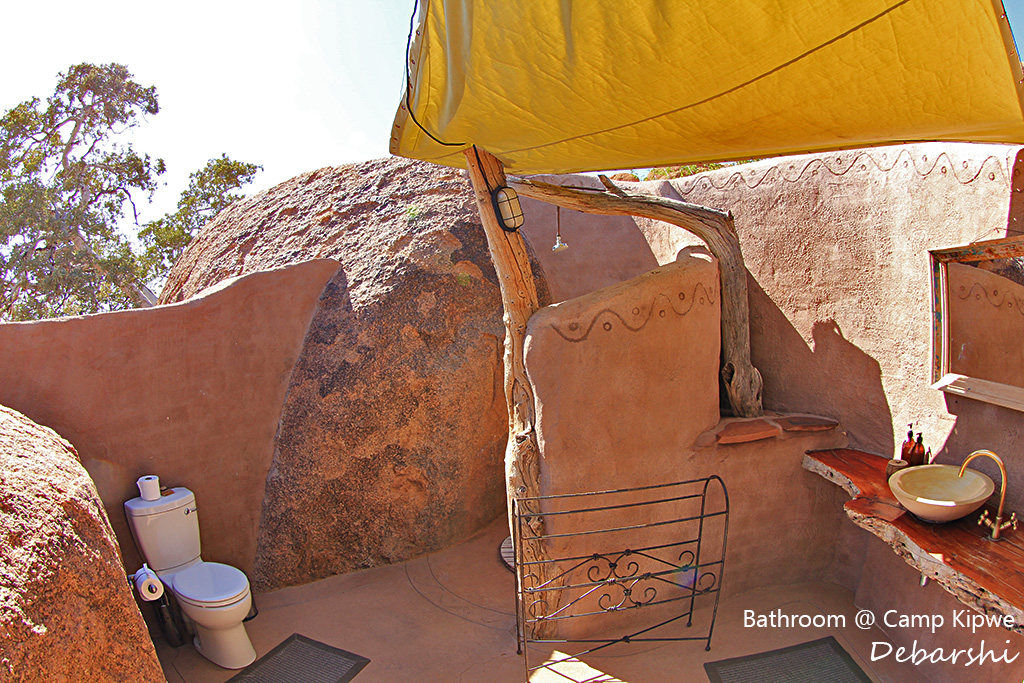
Apart from the numerous Damara Hornbills, we also saw the Red Headed Finch, Mountain Wheatear, Dusky Sunbird, Rosy-Faced Love Birds and a large yellow snake which had slithered in to the dining hall. We also had a good sighting of the Ruppell’s Korhaan as we left Twyfelfontein .
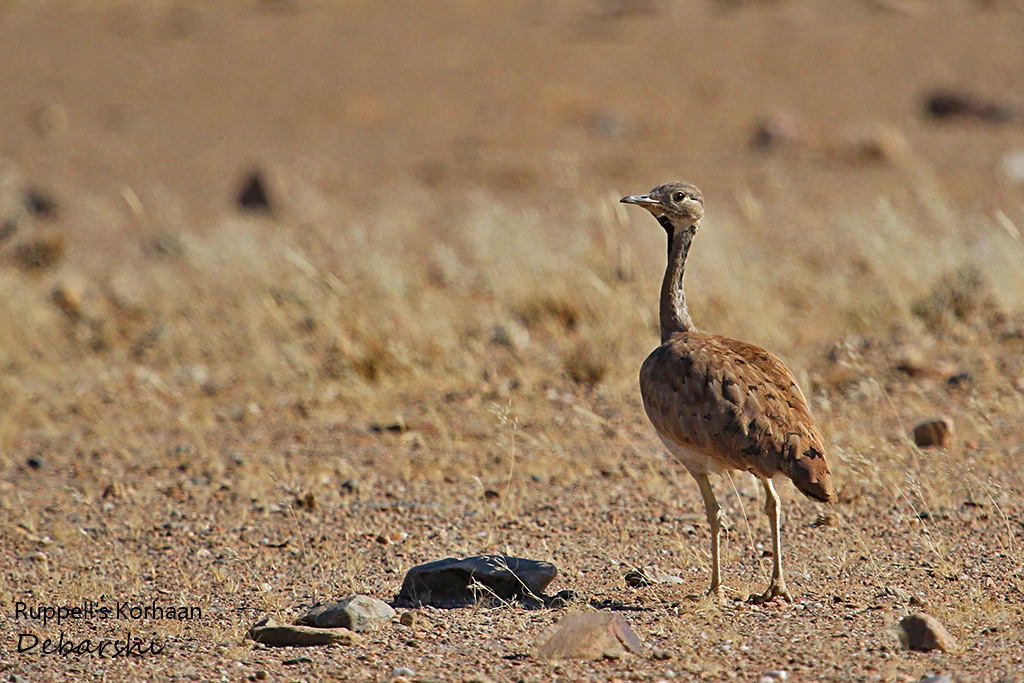
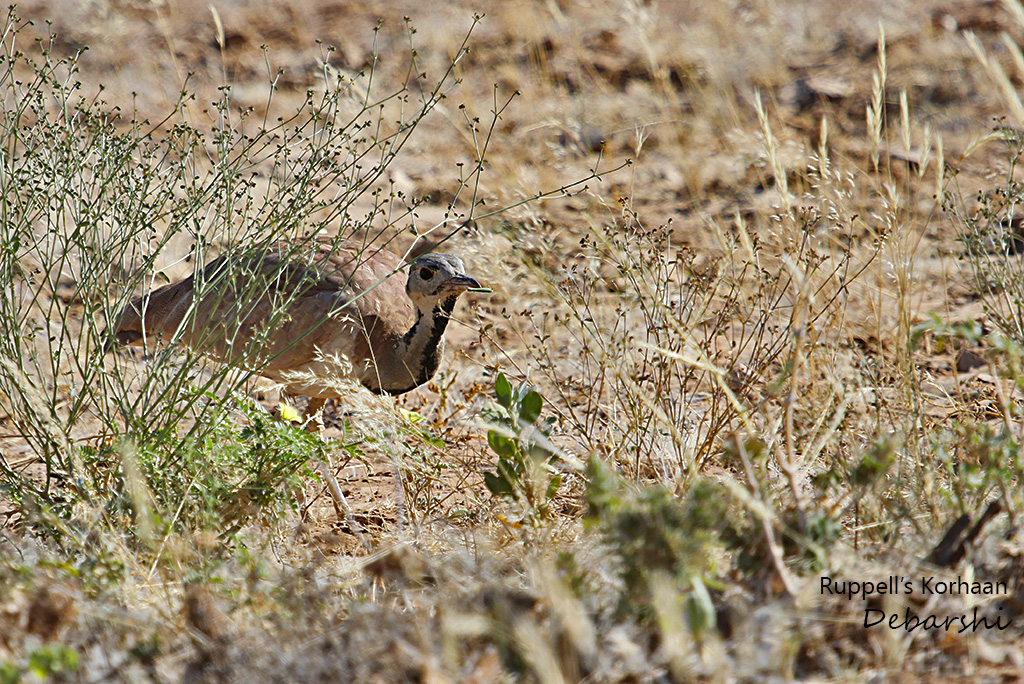
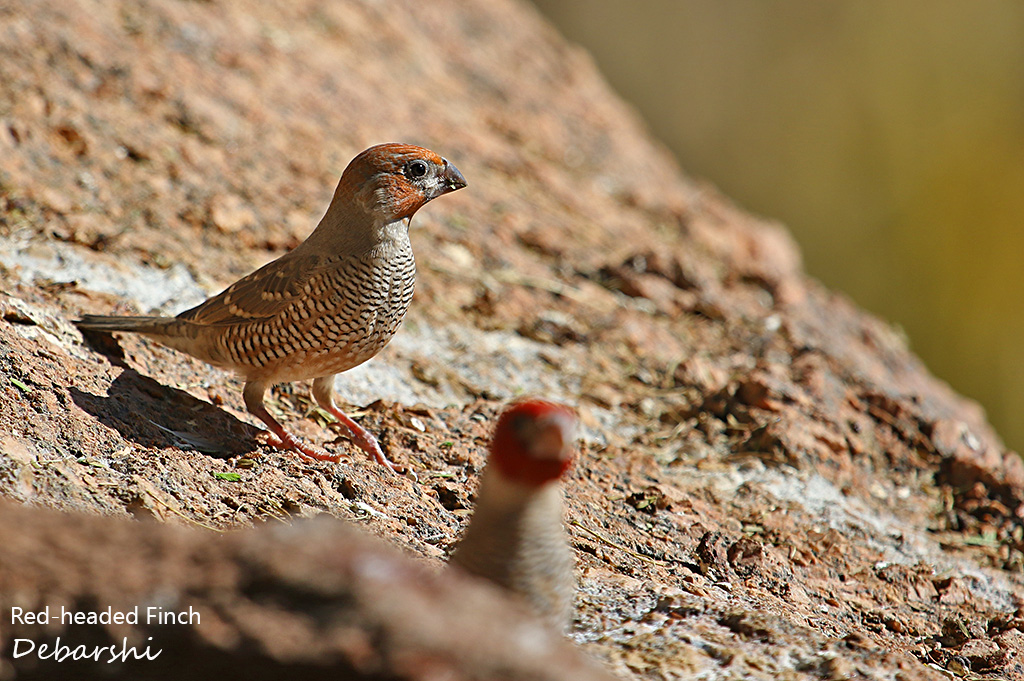
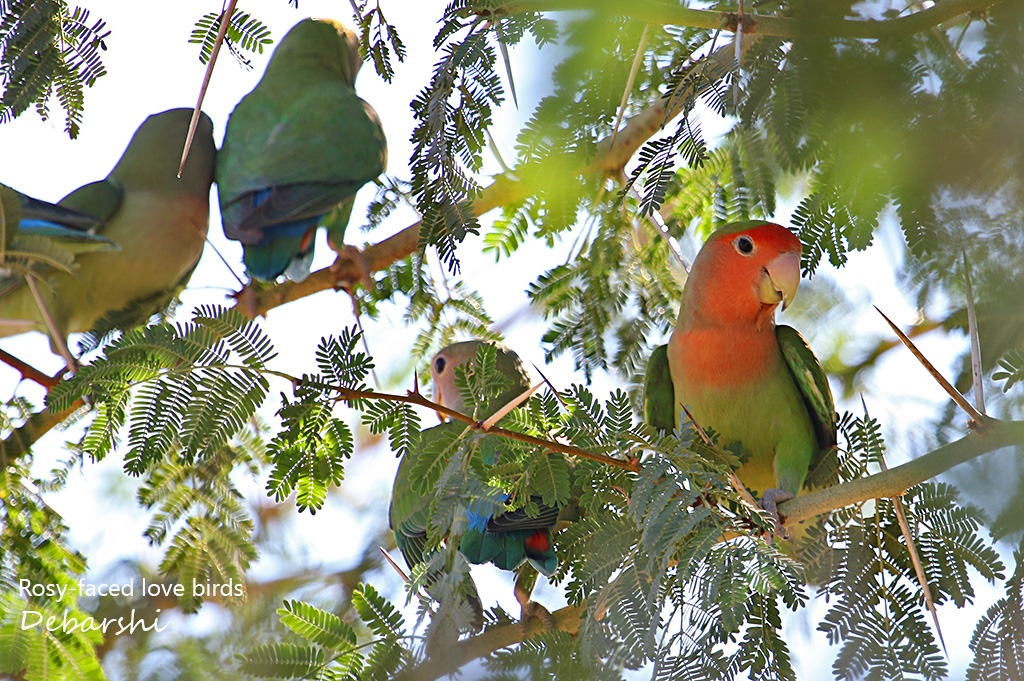
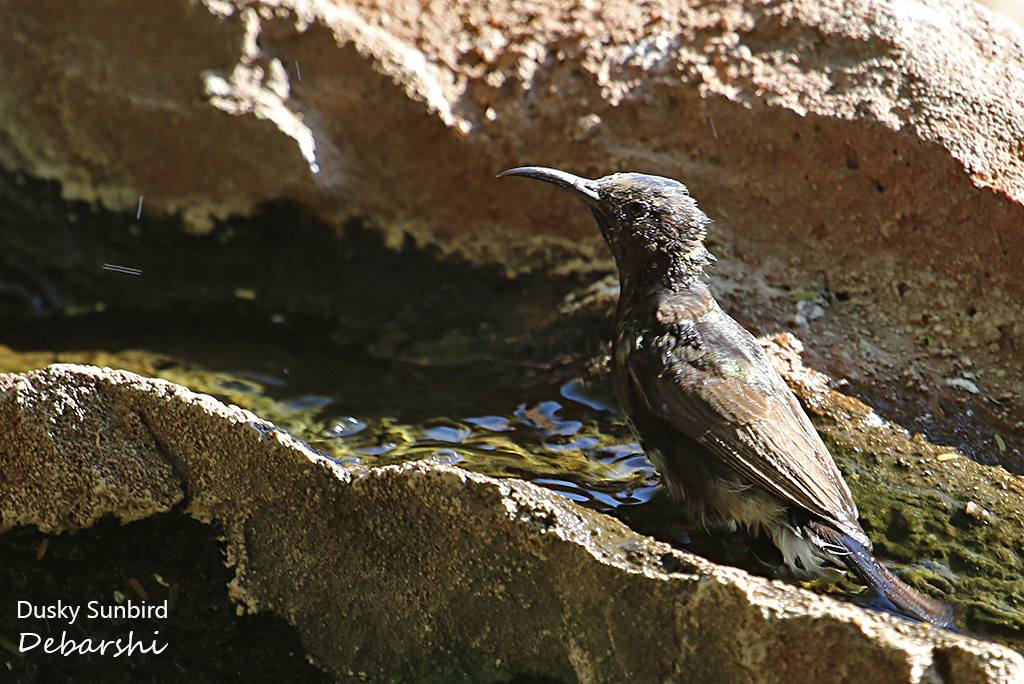
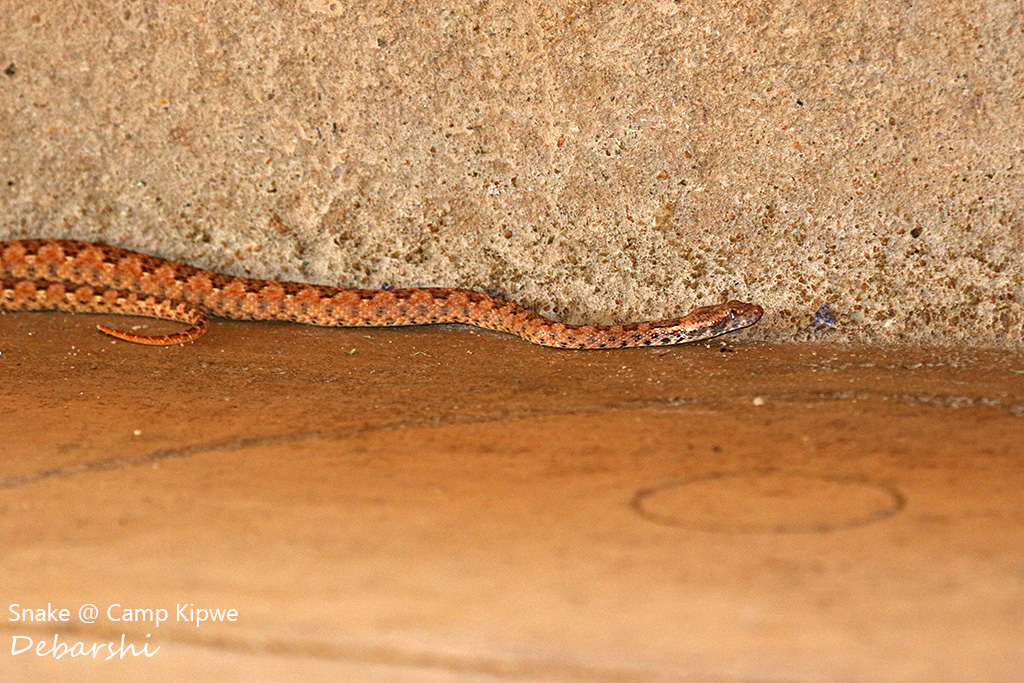
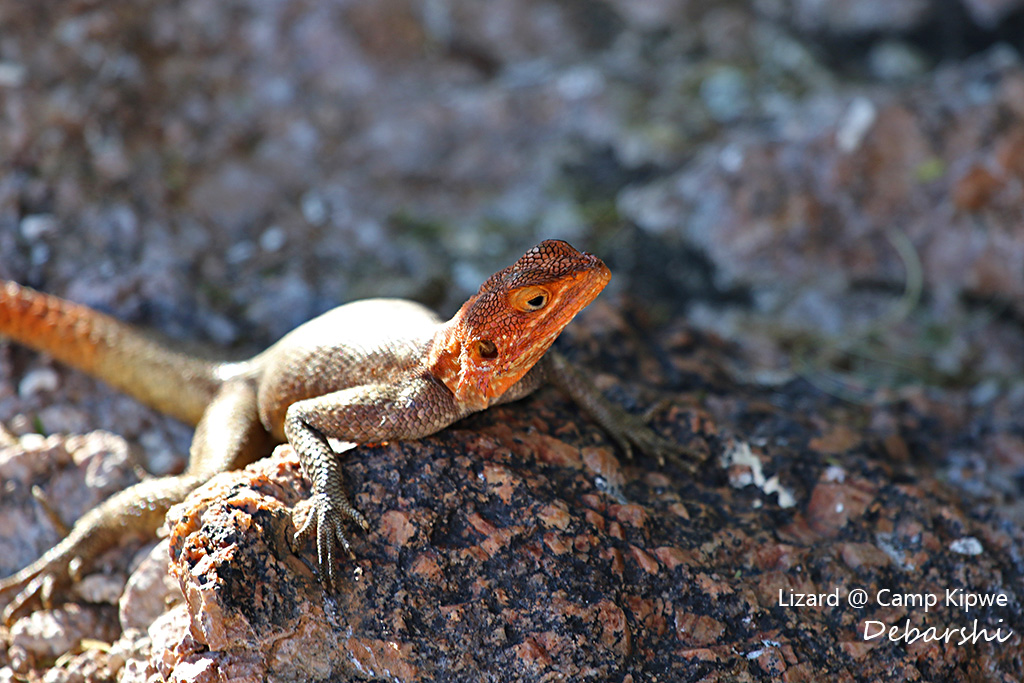
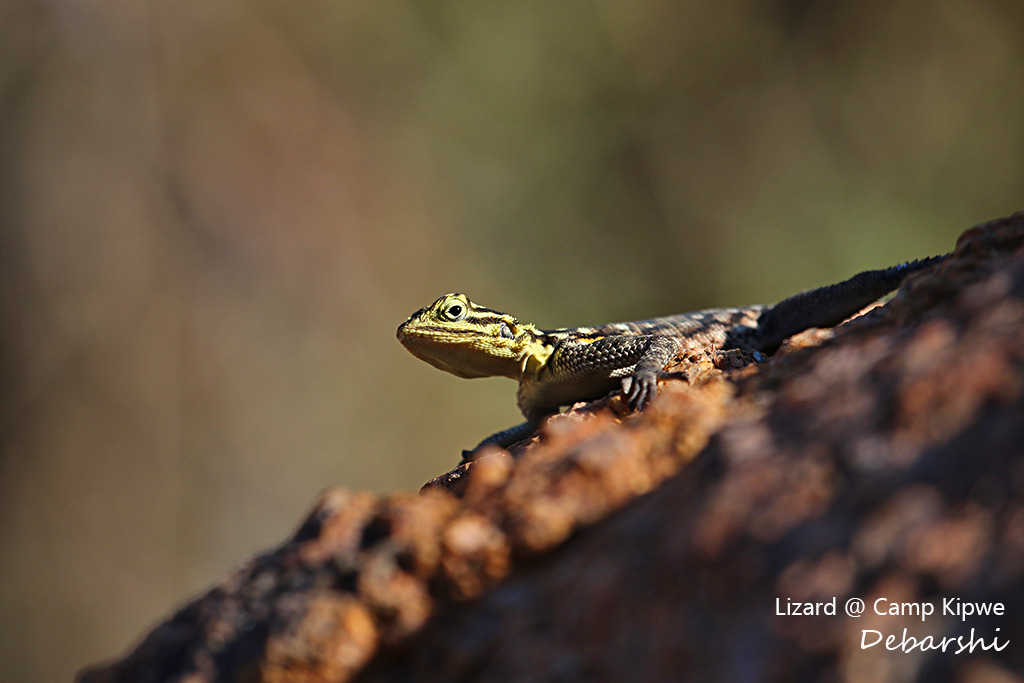
Twyfelfontein is home to one of the well preserved and important rock art galleries in Africa. In the 50’s, Twyfelfontein attracted less than a hundred tourists. Today, this open rock art gallery attracts close to half a lac international tourists making it a very popular destination.
